Essential Guide to Timing Belt Tensioning for Optimal Performance

Proper tensioning is critical for timing belt performance, ensuring efficiency, reliability, and longevity. Whether in industrial automation, robotics, or precision equipment, maintaining the correct belt tension prevents premature wear, slippage, and misalignment. In this guide, we’ll cover the fundamentals of timing belt tensioning and how York Industries’ tensioners provide a reliable solution for maintaining precise belt tension in various applications.
Why Proper Timing Belt Tensioning Matters
Timing belts are essential for synchronous drive systems, providing smooth power transmission without the need for lubrication. However, improper tensioning can lead to several issues, including:
-
Excessive wear: Over-tensioning can strain the belt and pulleys, reducing lifespan.
-
Slippage and misalignment: Under-tensioning causes loss of synchronization and can lead to inefficient performance.
-
Increased noise and vibration: Poorly tensioned belts generate unnecessary noise, impacting overall system efficiency.
-
Frequent maintenance needs: Incorrect tension leads to repeated adjustments and premature failures.
Loose timing belt tensioning risks breaking the belt due to high torque situations. When a timing belt is not properly tensioned, it can lead to excessive slack, which may cause the belt to slip off the pulleys or miss the timing marks, leading to misalignment or even severe mechanical issues. In high torque conditions, the lack of proper tension can result in the belt teeth skipping over the pulleys, disrupting synchronization between connected components.
This misalignment can cause operational inefficiencies and potential damage to the system. Moreover, a loose belt can also increase wear on the tensioner pulley and other related components, accelerating the need for maintenance or replacement. To prevent these issues, it's crucial to regularly check and adjust the timing belt tension. Properly tensioned belts not only enhance performance but also extend the lifespan of the belt and associated components.
How to tell if a timing belt is too loose or too tight?
Determining whether a timing belt is too loose or too tight is essential for maintaining optimal system performance and preventing potential mechanical issues. Here are some indicators and methods to assess the tension of your timing belt:
-
Visual Inspection: Examine the timing belt for any visible signs of slack or excessive tension. A loose belt may appear saggy between the pulleys, while a tight belt might show signs of stretching or fraying.
-
Listen for Unusual Noises: A loose timing belt can produce a slapping or flapping sound as it makes contact with other engine components. Conversely, an overly tight belt may cause a whining or squealing noise due to excessive tension on the pulleys.
-
Check for Misalignment: If the timing belt is too loose, it may slip off the pulleys or cause the timing marks to misalign, leading to synchronization issues. This can result in poor system performance, operational disruptions, or difficulty starting the system.
-
Use a Tension Gauge: Employ a tension gauge to measure the belt's tension accurately. This tool provides a precise reading of the force required to deflect the belt, helping you determine if it falls within the manufacturer's recommended range.
-
Monitor System Performance: Pay attention to any changes in the system's performance, such as reduced power or unusual vibrations. These symptoms could indicate improper timing belt tension.
Regularly checking and adjusting the timing belt tension ensures that it remains within the optimal range, preventing premature wear and potential damage to the engine components. By maintaining the correct tension, you can enhance the longevity and reliability of your vehicle's engine.
How to Adjust Timing Belt Tension
The proper belt tension varies depending on the application, belt type, and operational load. However, general guidelines for tensioning include:
-
Determine the correct tension based on manufacturer specifications.
-
Check initial tension using a belt tension gauge or deflection method.
-
Adjust tensioners to achieve the optimal tension level.
-
Run the system to ensure even load distribution and check for signs of improper tension.
-
Perform periodic checks to accommodate wear and environmental factors.
Manual tensioning can be time-consuming, especially in systems that experience wear and stretch over time. This is where automatic and adjustable belt tensioners come into play.
York Industries' Universal Timing Belt Tensioners
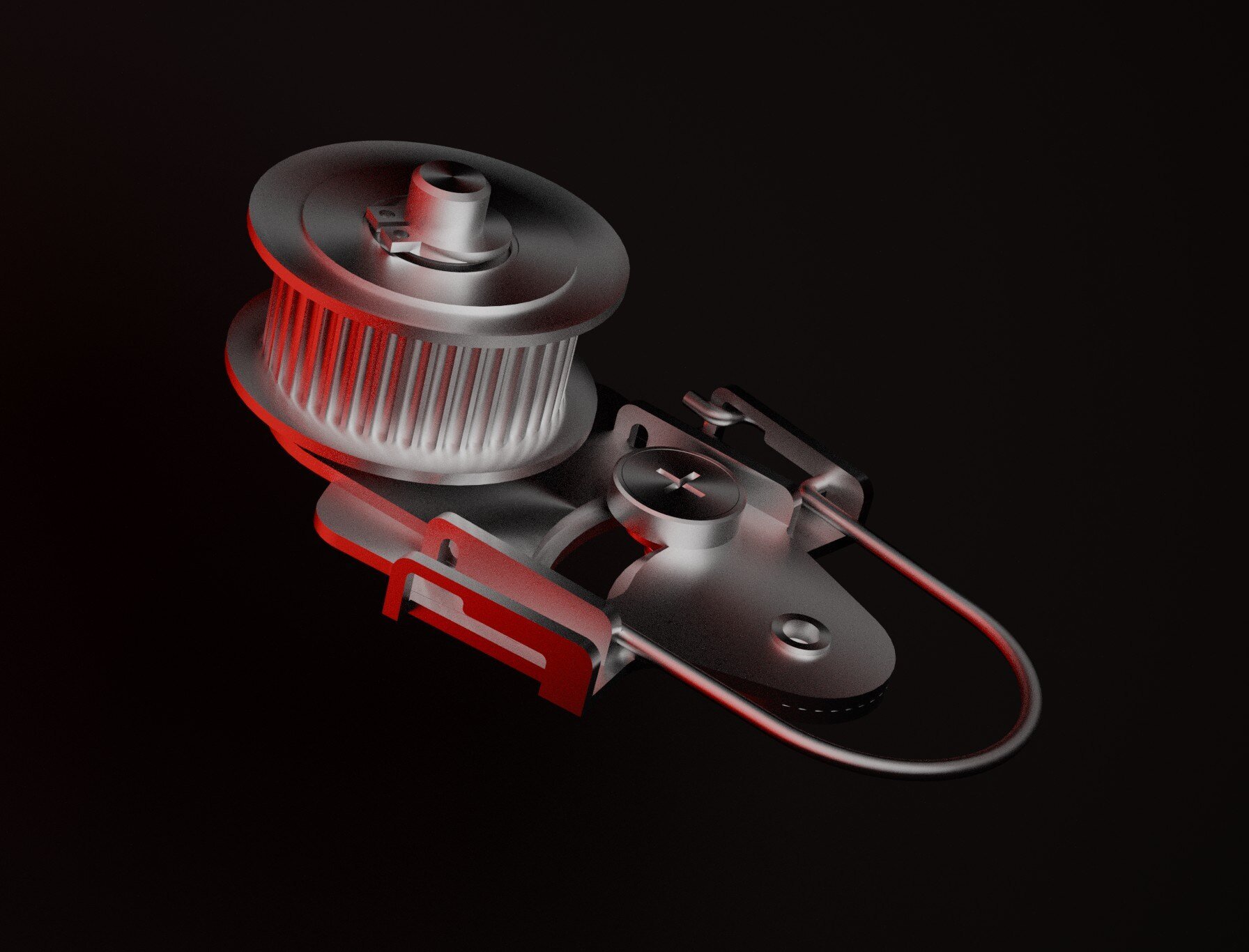
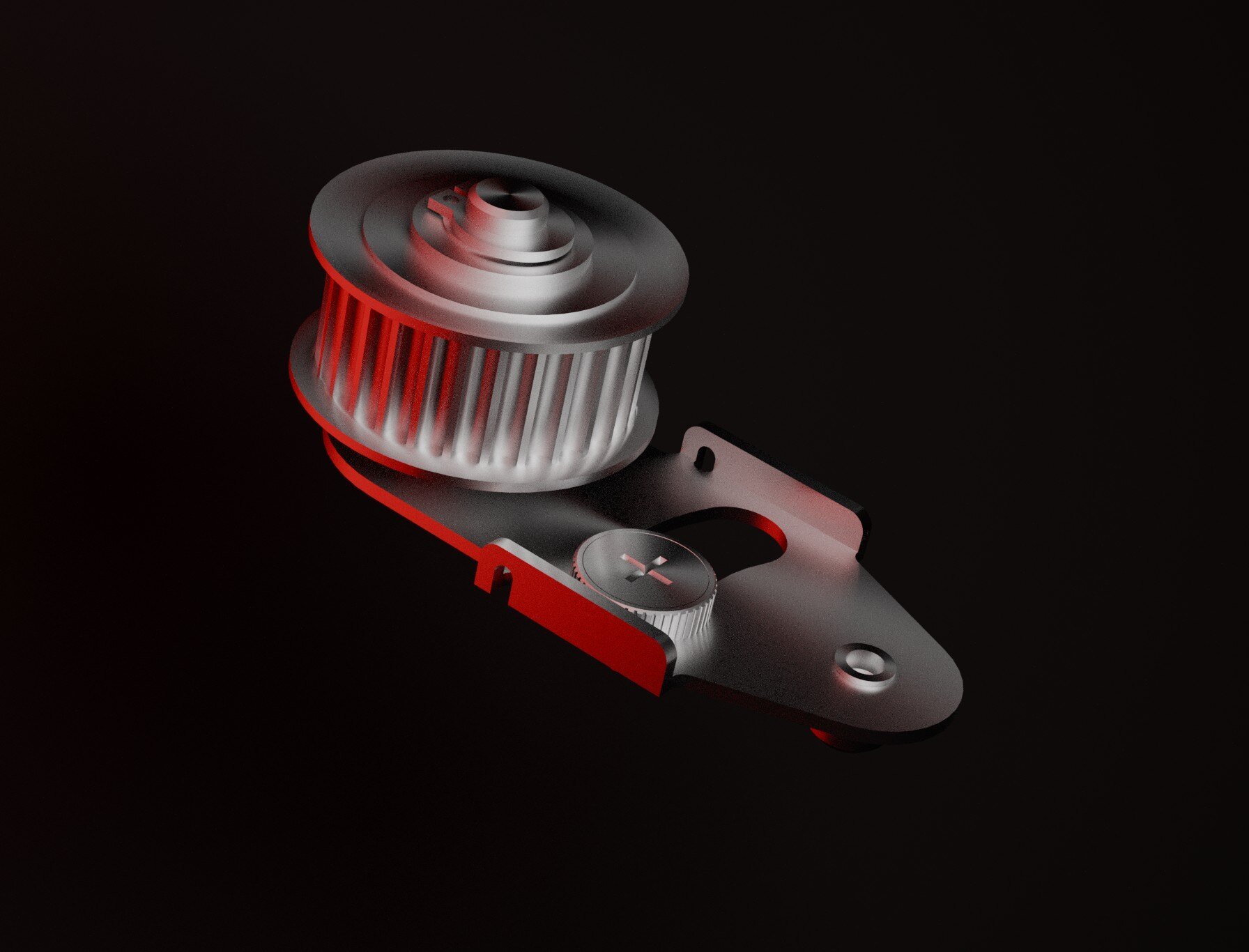
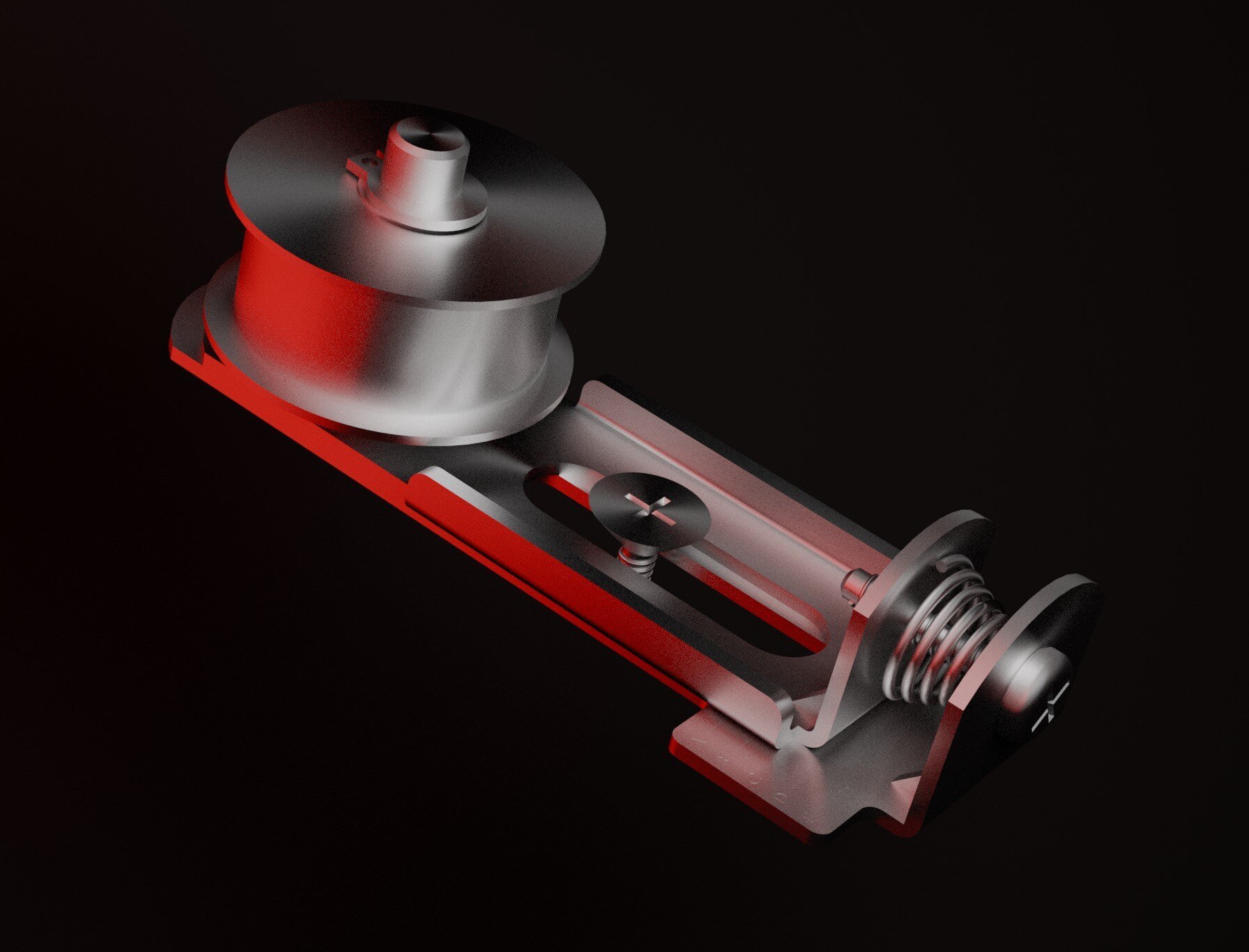
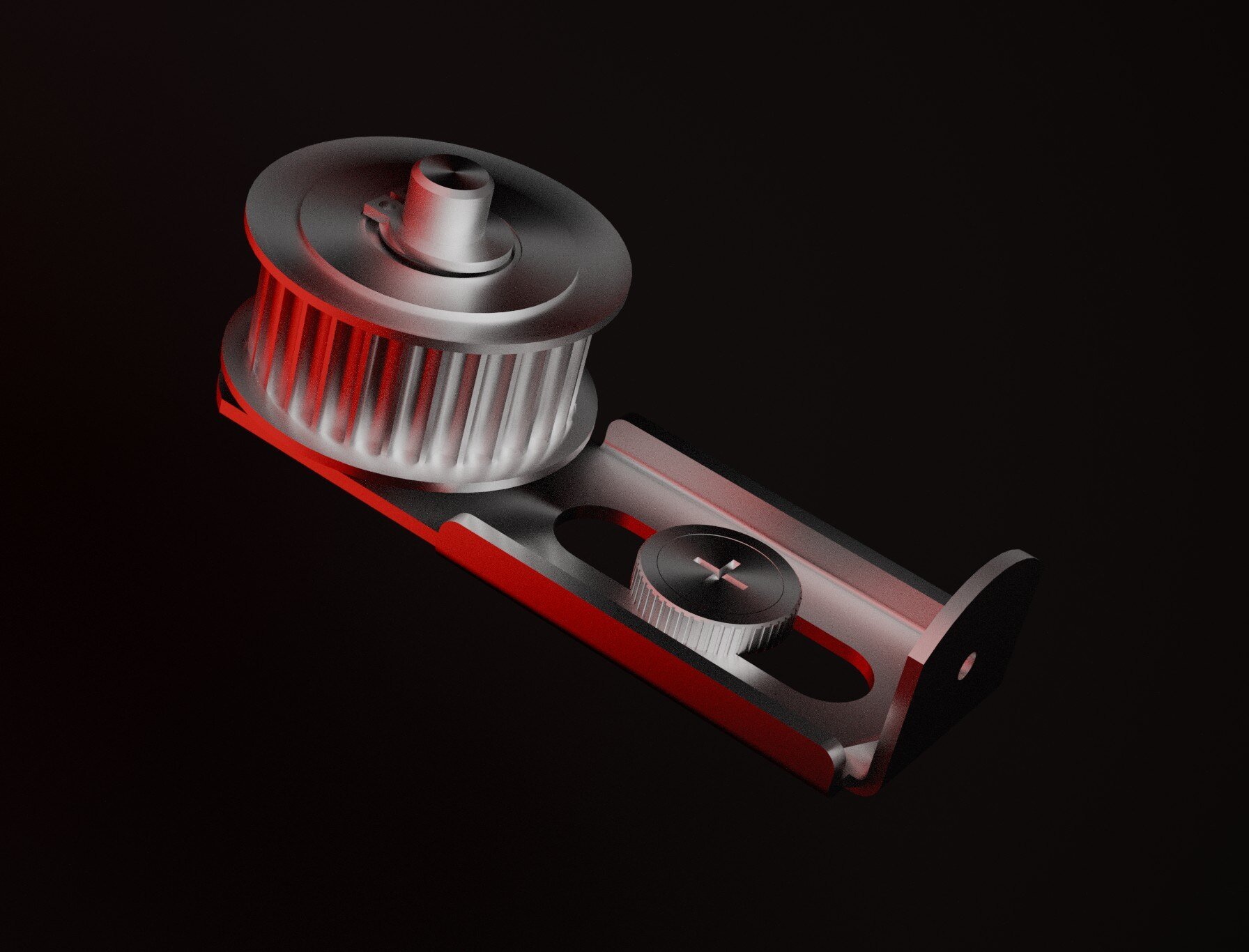
York Industries offers a range of universal belt tensioners designed to simplify tensioning and improve drive performance. These tensioners allow users to easily adjust tension to maintain optimal performance and extend the life of the belts and pulleys. These tensioners help achieve precise center distances with stock belt lengths, compensate for wear, and extend the life of both belts and pulleys.
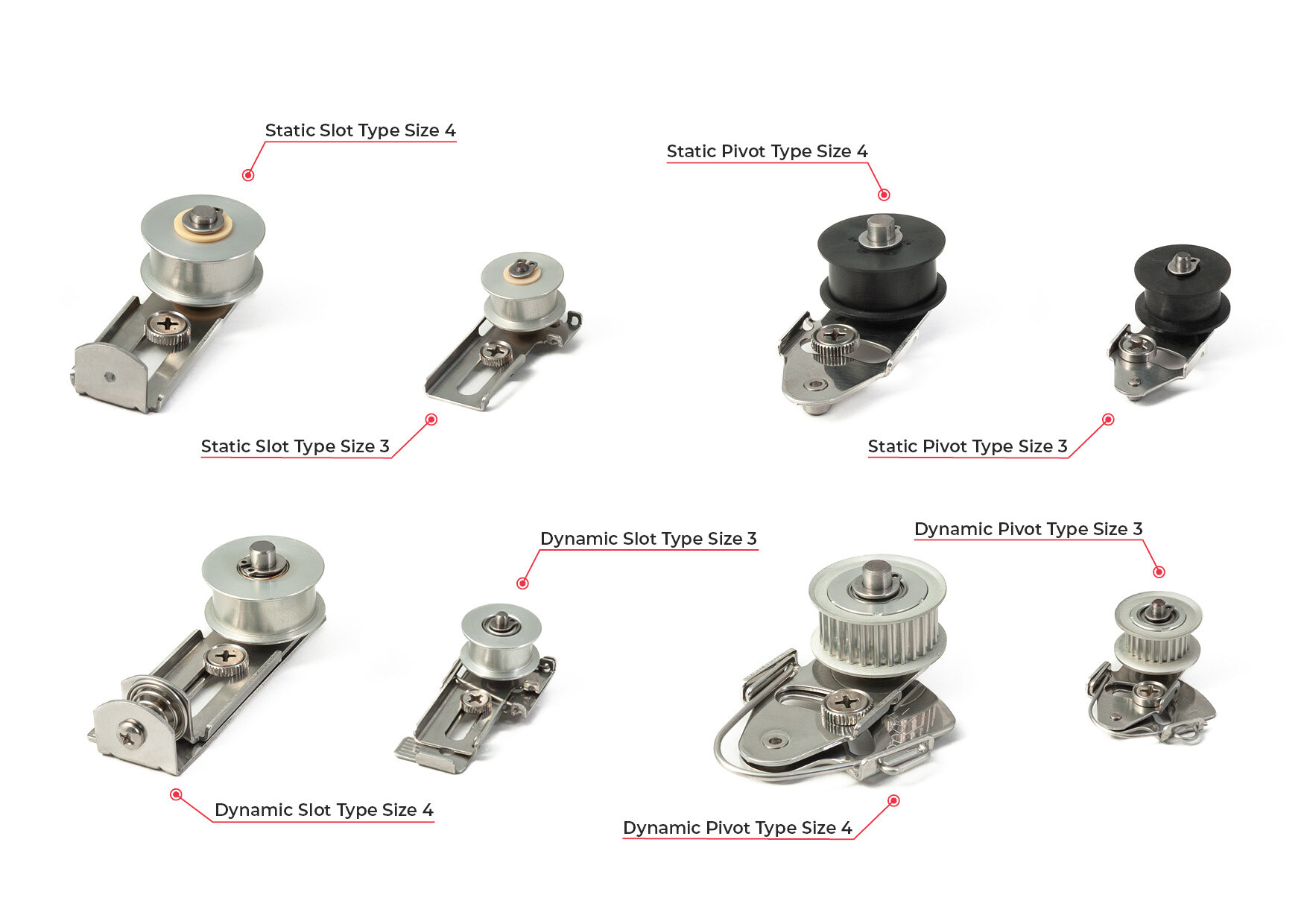
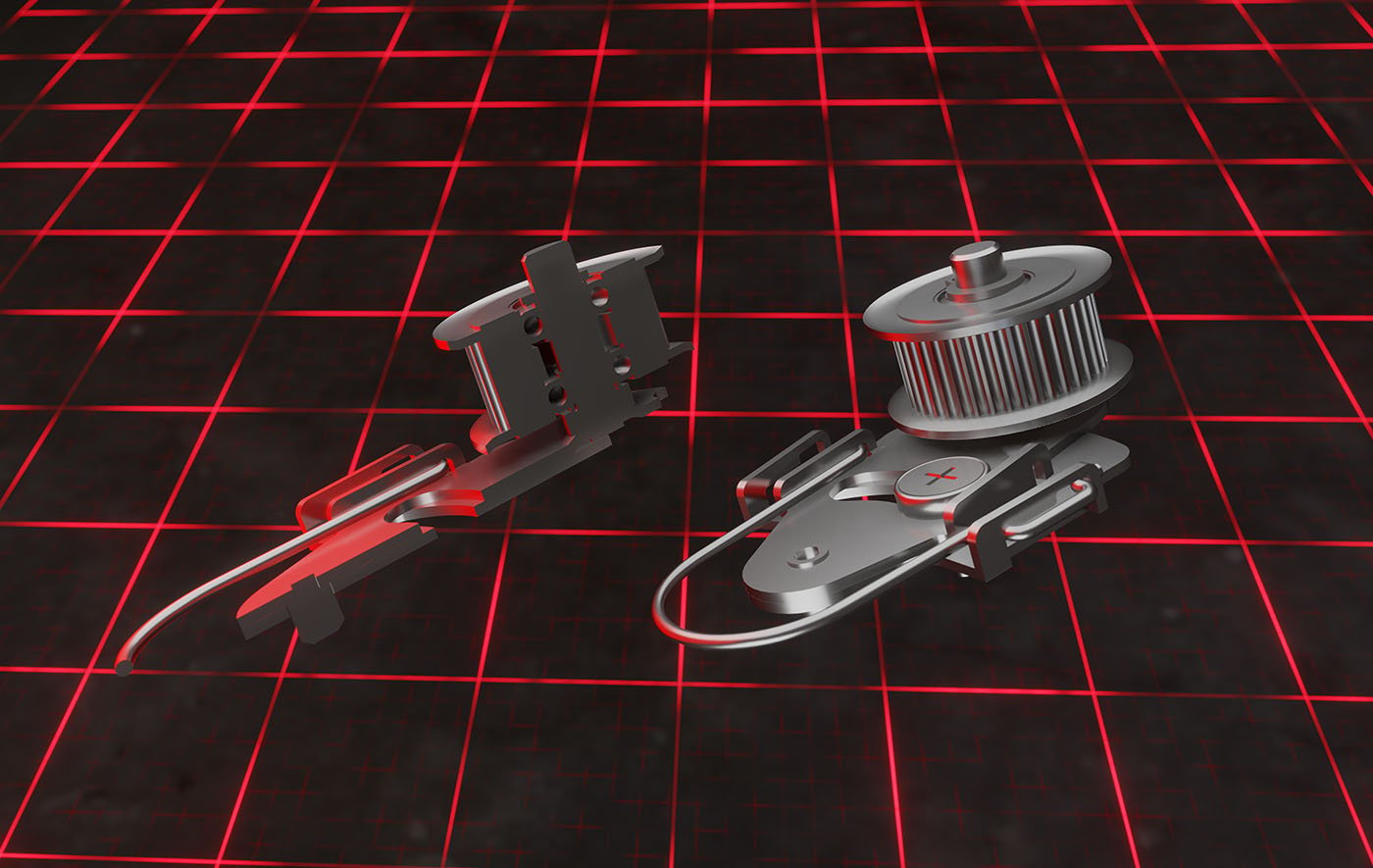
Our tensioners are meticulously engineered to integrate seamlessly with a variety of small synchronous drives, featuring innovative slot and pivot designs. We offer a comprehensive selection of four distinct types, each available in two sizes:
York's static tensioners are acclaimed for their exceptional efficiency, particularly in power drives with minimal irregular force transmission, where belt stretching and wear are naturally limited. In contrast, dynamic tensioners are extensively applied in synchronous drives, adeptly compensating for belt wear through their self-adjustment capabilities. These tensioners exhibit superior tolerance for minor installation errors and inaccuracies, simplifying adjustment and replacement procedures.
Do you need a custom Timing Belt Tensioner? Check our Tensioner Configurator!
















